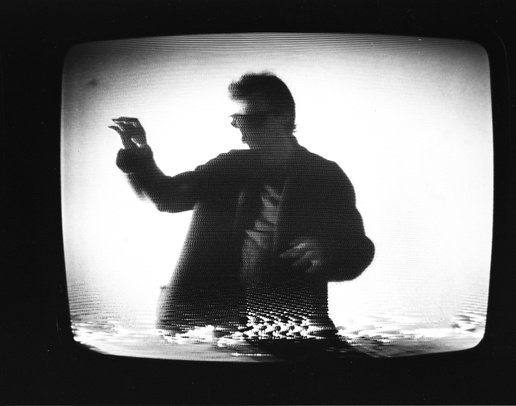Made in the Dark: Wojciech Bruszewski says 'Eureka!'
Mike Sperlinger’s lecture
We invite you to an event as a part of the opening Wojciech Bruszewski's Archive, that will take place on June, 29nd via the Museum of Modern Art's website: Mike Sperlinger’s lecture "Made in the Dark: Wojciech Bruszewski says 'Eureka!' and book launching "Wojciech Bruszewski. Across Realities", edited by Marika Kuźmicz, Łukasz Mojsak i Jakub Zgierski.
Wojciech Bruszewski's work was often about illumination: a light bulb activated by the artist's voice as he read a text, a door opening at different angles to let light into an otherwise darkened space, a scream modulated according the changing source of light in the room... But what was at stake for Bruszewski with all these rituals in the dark? What kind of enlightenment did he think art made possible, and how did it relate to the laying of 'traps for reality', as he memorably described his practice?
Mike Sperlinger was the assistant director of LUX (www.lux.org.uk), an agency for artists working with film and video, for more than 10 years. He has written extensively on the moving image, photography and early conceptual art. He is currently Professor of Writing & Theory at the Oslo Academy of Fine Art.
The book is an attempt of a revision and a reinterpretation of the body of work of Polish artist Wojciech Bruszewski (1947-2009). Bruszewski was multimedia artist who worked in photography, film, video, installation and computer graphics. He was a member and co-founder of the Zero-61 group (1965-1968) and the Film Form Workshop (1970-1977).
“Across realities” includes essays of curators and art theorists: David Crowley, Marika Kuźmicz, Michał Libera , Łukasz Mojsak, Daniel Muzyczuk, and Mike Sperlinger focused on his works from the 70’, connected to the activity of the Film Form Workshop, a group created by students and graduates of the PWSFTviT higher film school in Łódź that analyzed the film medium. In Bruszewski case this analysis was conducted especially by researching the connections between the visual and audial components of films.
